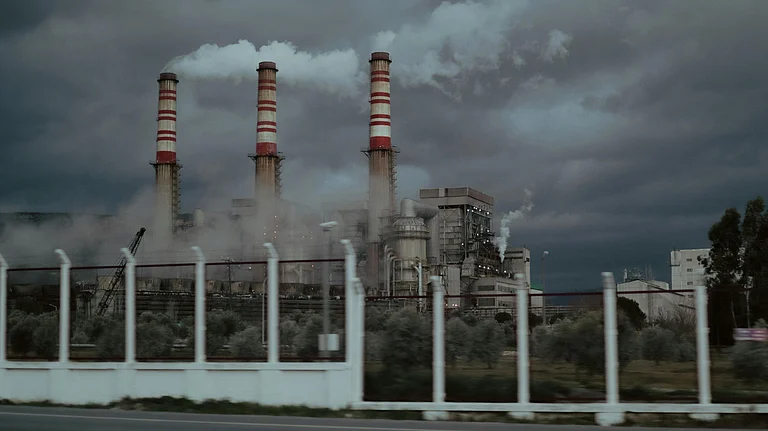
India plans to shut down 147 ageing coal mines in the coming years, with another 150 unprofitable ones likely to close soon.
Despite these closures, coal output may rise in the short term, driven by a smaller number of highly productive mines.
The transition will have major social and economic impacts across India’s coal belts.
India plans to close down 147 coal mines over the next fewyears as they reach the end of their productive life. In addition, around 150 mines are currently unprofitable and likely to close soon. Together, these 297 mines that might close exceed the total number of operating mines across Europe and South Africa combined.
To be clear, India’s coal output may continue to rise in the short termmainly coming from smaller number of highly productive mines. Yet,these 297 mines will still shut down—either because they are depleted, uneconomic, orenvironmentally unsustainable. The pace and scale of this transition will create ripple effects across India’s coal belts—from Jharkhand to Chhattisgarh, Madhya Pradesh to Telangana. Managing these closures strategically will determine whether India’s energy transition is just or deeply painful.
Globally, countries that have experienced major coal transitions offer lessons. In Germany’s Ruhr Valley, decades of early planning turned a coal-dependent region into a hub for research, services, and green industries. In the United States, our research shows that Appalachia’s experience is the opposite: unplanned closures left communities behind, leading to unemployment and poverty.South Africa’s Mpumalanga province, now beginning its own just transition under international climate finance. Crucially, it is creating a regional transition plan coordinated by both national and provincial governments.
India can learn from both sets of examples: anticipate closure early, plan regionally, and link social, industrial, and environmental policies.
Welcome step, but not enough
The good news is that the Ministry of Coal’s 2025 Mine Closure Guidelines, released in March, recognize just transformation for the first time. They direct companies to think about repurposing closed coal mines for alternative economic uses. This is a big leap forward from earlier policies that focused mainly on land reclamation and environmental rehabilitation.
However, repurposing mines is only one pillar of a just transition. The closure of a coal mine does not merely end mine operations; it upends a local economic ecosystem. Mines anchor local jobs, local revenues, and social services. When a mine closes, local markets, small businesses, and local government revenues all shrink. Repurposing a coal mine into a solar park or fishery cannot automatically absorb all those who lose their livelihoods.
In other words, coal mine repurposing is important but not sufficient. India’s coal transition needs regional economic diversification—a deliberate plan to create new industries, services, and skills beyond coal.
Ground up understanding
Fieldwork in India’s major coal regions underscores this challenge. In the last five years, our field work incoal states of Jharkhand, West Bengal, Telangana and Maharashtra has shown that coal has shaped the local economy for over a century. Informal jobs—from loading trucks to repairing equipment—far outnumber direct employment in mines. Our surveys and interviews in Jharkhand and Telangana found that one direct mining job supports five jobs in transport, small businesses, and services. When a mine shuts, these indirect jobs will disappear overnight.For women, the impacts are even sharper. In several districts, women’s earnings are tied to ancillary work—small food stalls, home-based tailoring, or coal sorting on discarded heaps. With mine closures, these fragile income sources vanish.
Closure also undermines local welfare infrastructure. State owned companies like Coal India often run schools, hospitals, and water systems for workers and nearby communities. Once operations stop, these facilities struggle for funds. Without aeconomic diversification plan, local administrations are left to manage the vacuum.
Future planning
India urgently needs a national framework for economic diversification of coal regions—anchored by the central government but implemented by states and districts. This framework must go beyond mine-level repurposing and focus on creating new economic opportunities for entire regions. Such a framework could rest on four interlinked pillars.
The first is the development of regional transition plans. Each coal-bearing district impacted by mine closure should prepare a long-term economic diversification roadmap aligned with state industrial and energy policies. This requires mapping existing skills, land use, infrastructure, and investment potential to identify new industries that can absorb workers displaced by mine closures.
The second pillar is the creation of a dedicated Just Transition Fund. The central government could establish this fund—potentially supported by revenues from the coal cess, or international climate finance. Such a fund can provide targeted support for retraining, and infrastructure development in transitioning regions.
The third pillar is institutional coordination. Various studies have shown lack of coordination between different stakeholder groups hamper effective just transition implementation. Currently, responsibilities for mine closure, land use, and regional development are scattered across multiple agencies, including the Ministry of Coal, state industries departments, and district administrations. A joint coordination mechanism involving these bodies is essential to ensure that closure planning is fully integrated into broader economic planning and that policies operate in harmony rather than in isolation.
Finally, the fourth pillar is community participation. A just transition cannot be designed solely by bureaucrats or industry experts. Workers, trade unions, small businesses, and local entrepreneurs must have a seat at the table to shape how their regions evolve beyond coal. Their participation will help ensure that the transition is not only technically sound but also socially grounded in local realities.
Time is running out
India’s closure policy should view coal regions as opportunities for reindustrialisation. Many coal districts have infrastructure—rail, power,water, roads and skilled labor—that could anchor new investments in agriculture, manufacturing, and clean industries. District-level diversification could also help India promote balanced regional growth.
Yet, time is running out. Many mines are already scheduled for closure within this decade. The decline will happen earlier for some districts in comparison to other, for instance district like Betul in Madhya Pradesh andKoriya in Chhattisgarh mine closure has already started impact local livelihood and district revenue. Without proactive planning, closures could result in economic distress, similar to what parts of the UK and the US experienced in the 1980s.
A just transition will not happen automatically—it must be meticulously planned, financed, and governed. India has a decade to get this right. Yet, economic diversification is a long process, the planning must start now.The new Mine Closure Guidelines 2025 are a step in the right direction, but much more needs to happen. And it must happen soon.
If India succeeds, its coal regions could become global models for turning decline into opportunity. If it fails, these regions risk becoming ghost economies.
The choice is clear: plan now, or pay later.
Dr. Sandeep Pai is a global expert on just energy transtion and is a Senior Associate (Non-Resident), The Center for Strategic and International Studies (CSIS).
Rishi Kishore is a public policy researcher with a decade of experience in the sector and a primary research interest in just energy transition and the political economy of development.
The views expressed in this article are solely those of the authors.





























